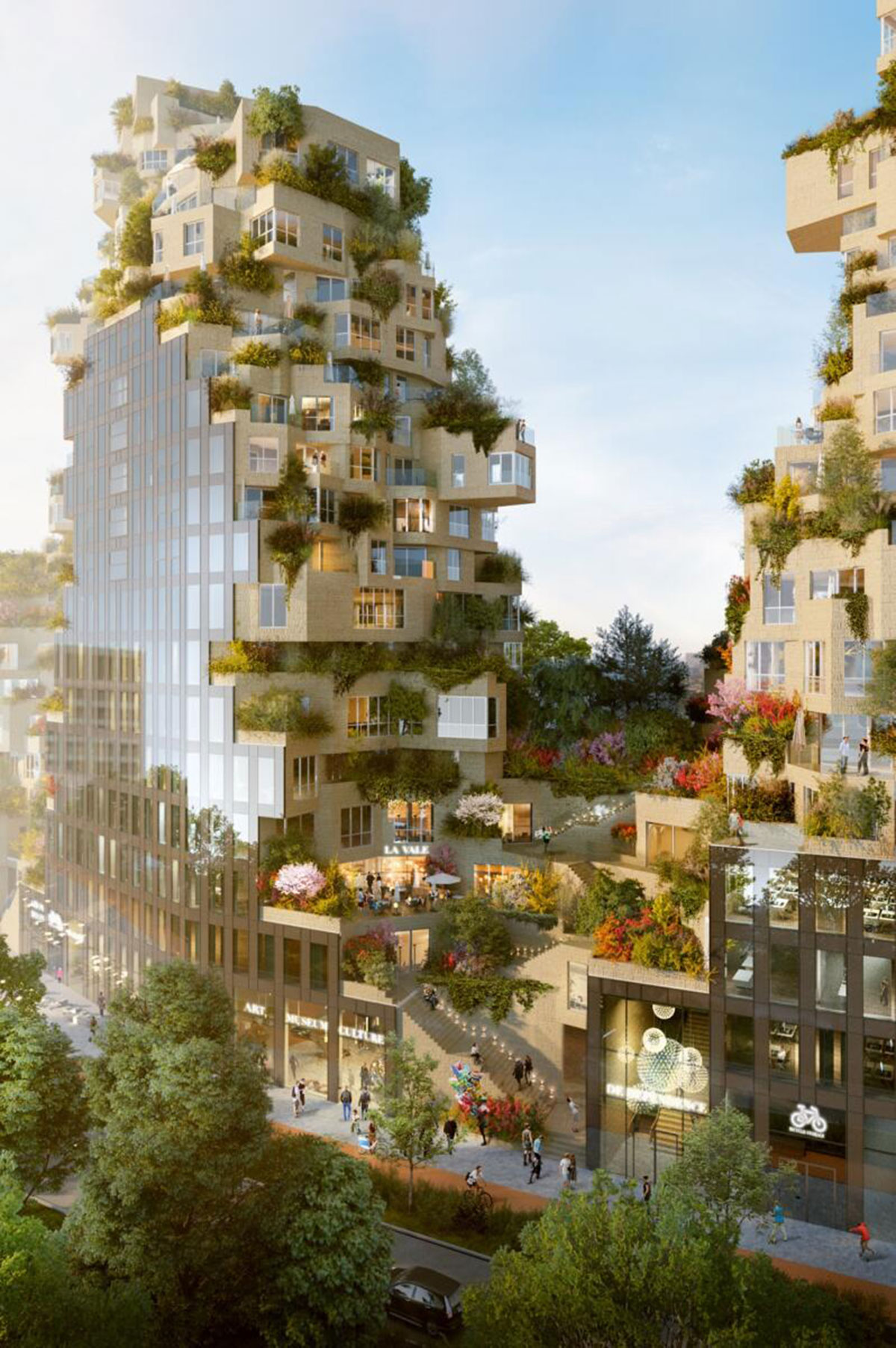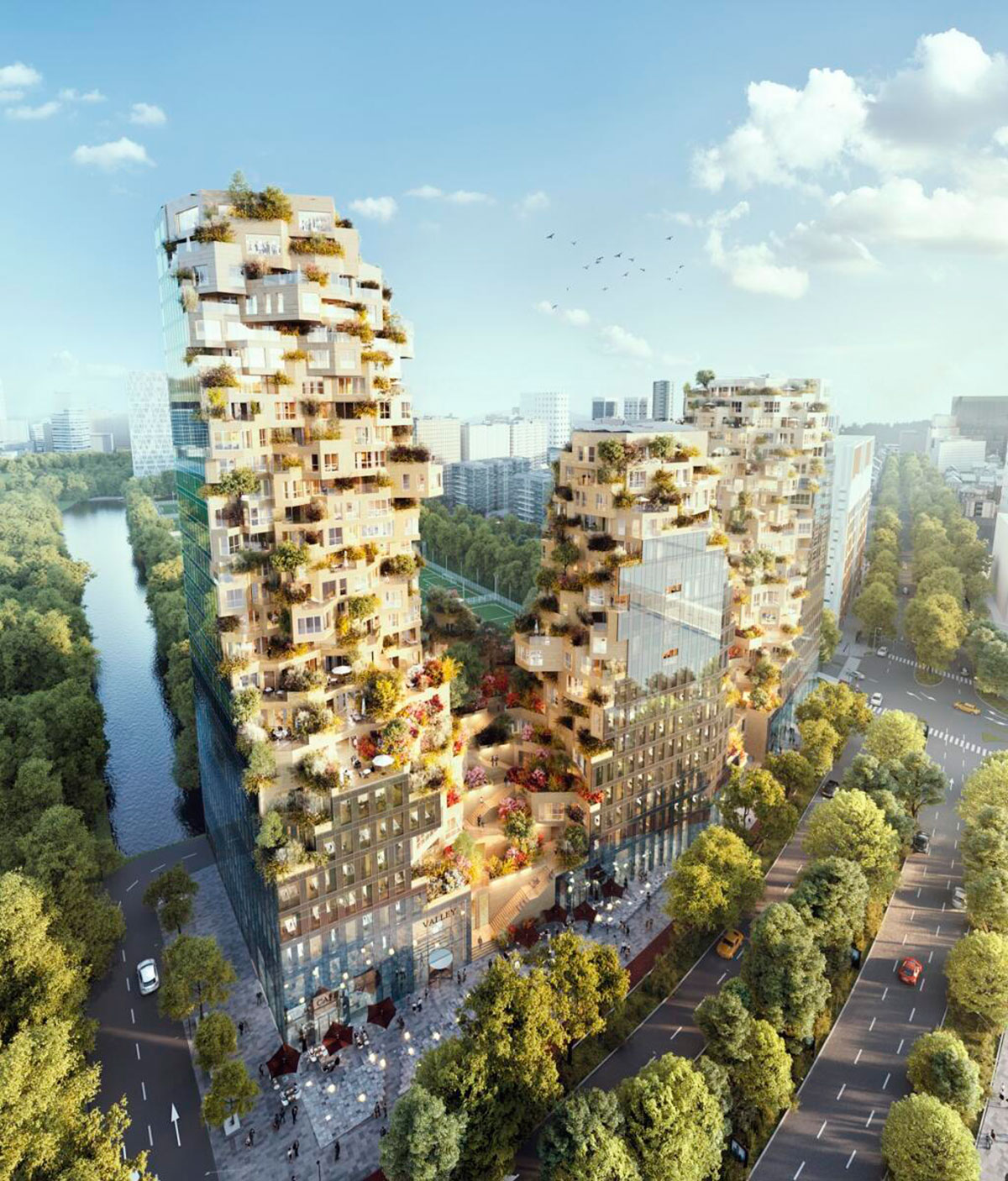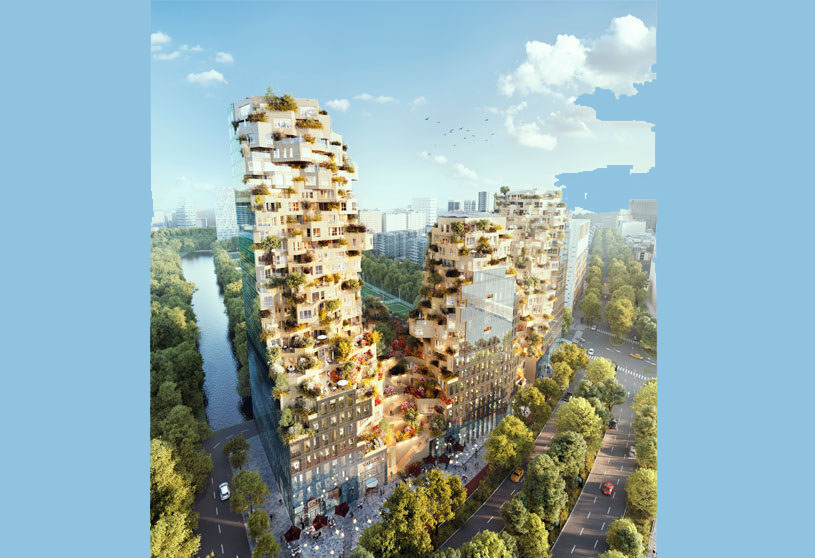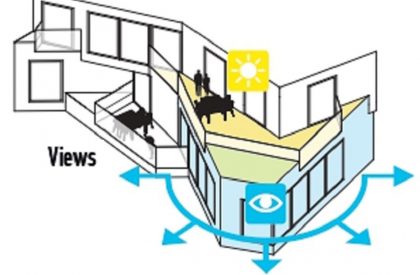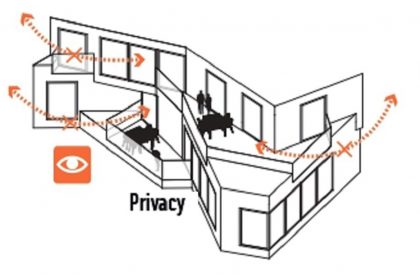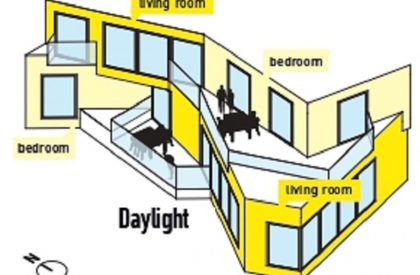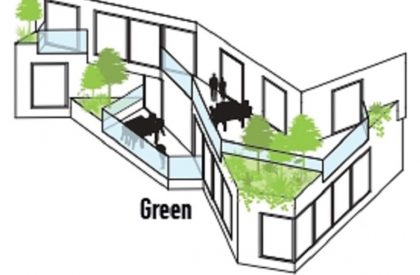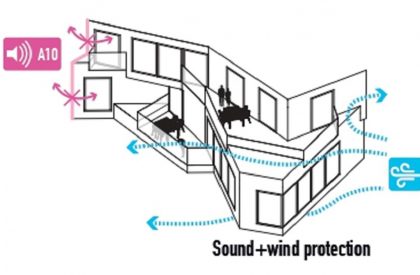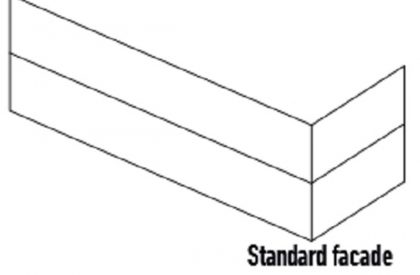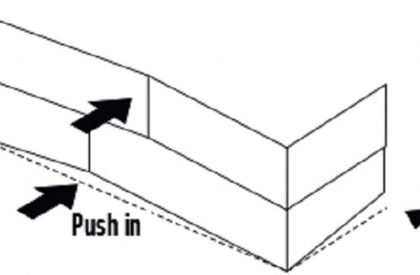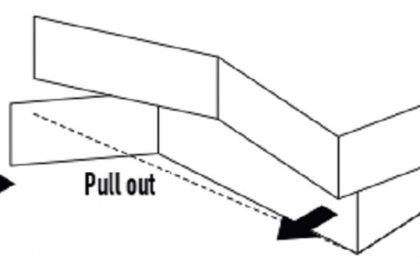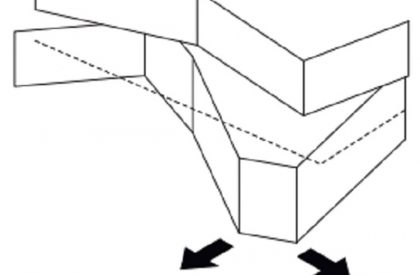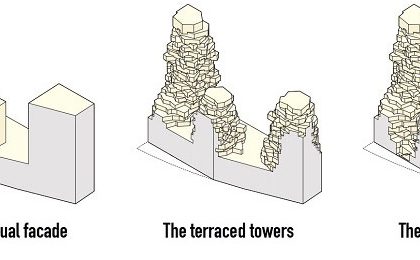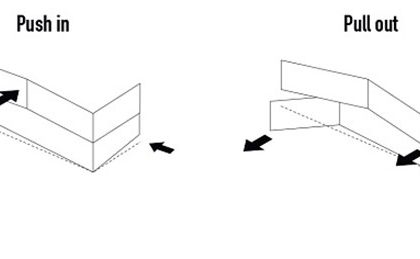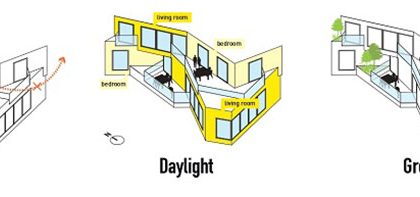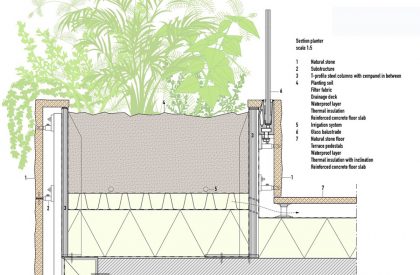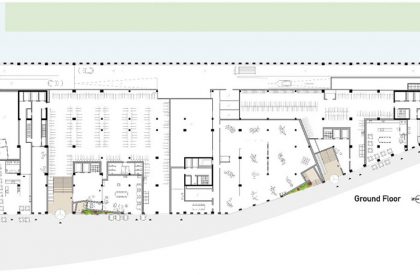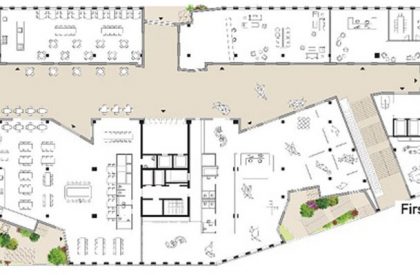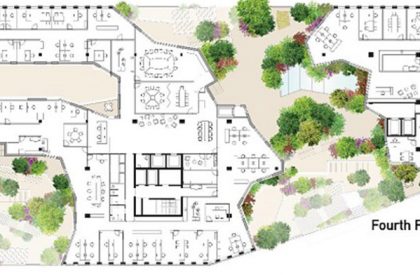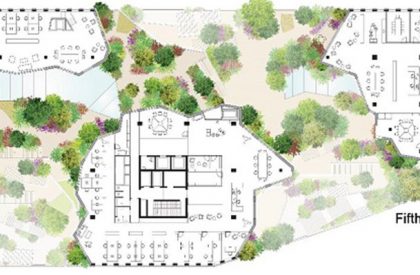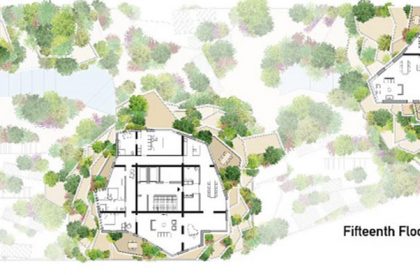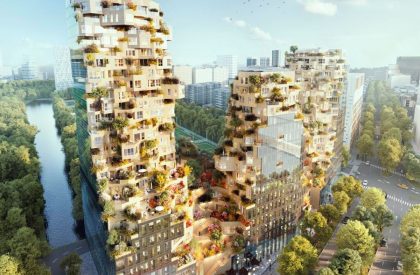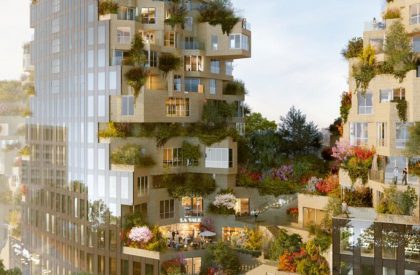Excerpt: Valley, designed by MVRDV, is a mixed-use complex combining offices, shops, catering, cultural facilities, and apartments in one building. Designed for developer Edge, Valley is an attempt to bring a green and human dimension back to the inhospitable office environment of Amsterdam Zuidas. It is a building with multiple faces; on the outer edges of the building is a shell of smooth mirrored glass, which fits the context of the business district.
Project Description
[Text as submitted by architect] Valley’s three peaks of varied heights reach up to a maximum of 100 meters at which the publicly accessible Sky- bar sits, spread out over the top two stories, offering panoramic views over Amsterdam. The building consists of 196 apartments, 7 stories of offices, a three-story underground parking with 375 parking spots and various retail and cultural facilities. From street level, a pedestrianized path, running along retails functions, terraces and roof gardens, leads up to the central valley-area spread across the 4th and 5th level and surrounds the central tower. Internationally renowned landscape architect Piet Oudolf designed all of Valley’s vegetation, focusing on a year-round green appearance. The project derives its name from the publicly accessible valley.
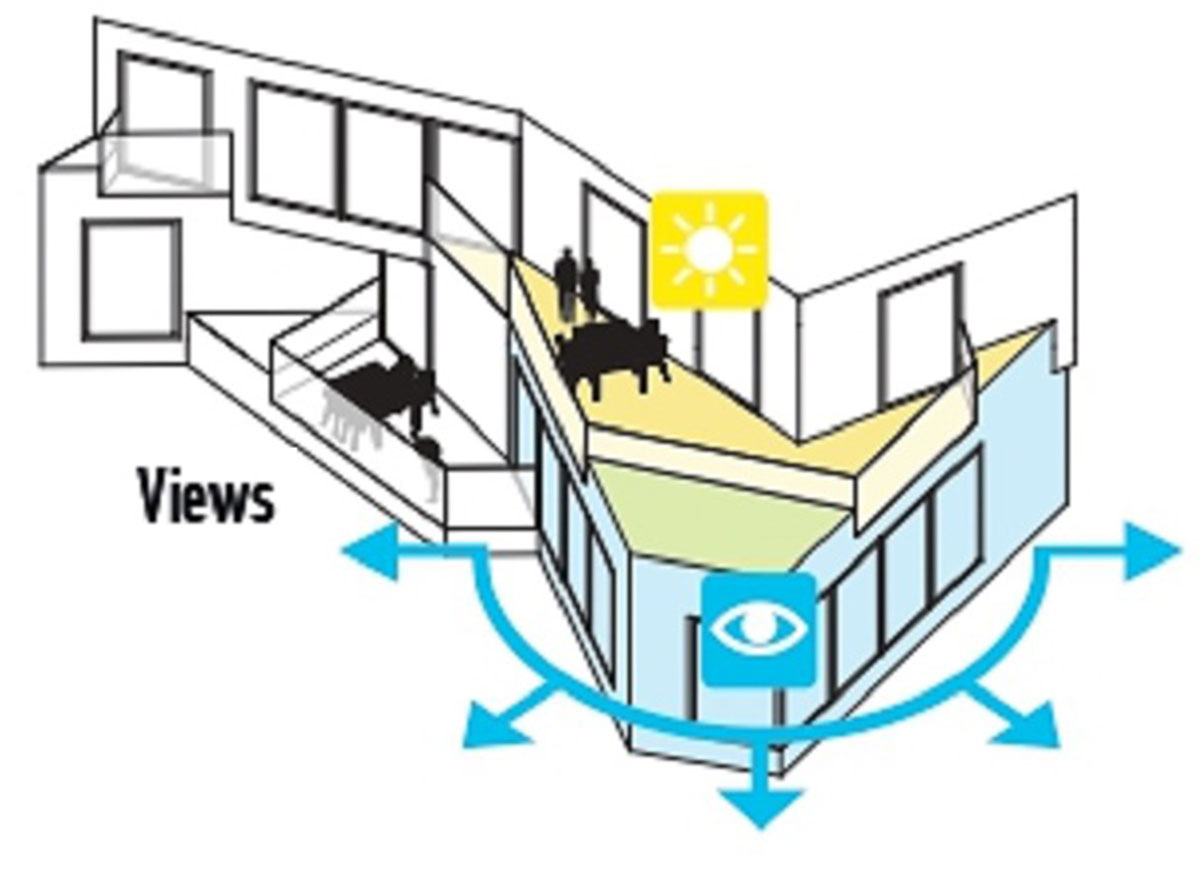
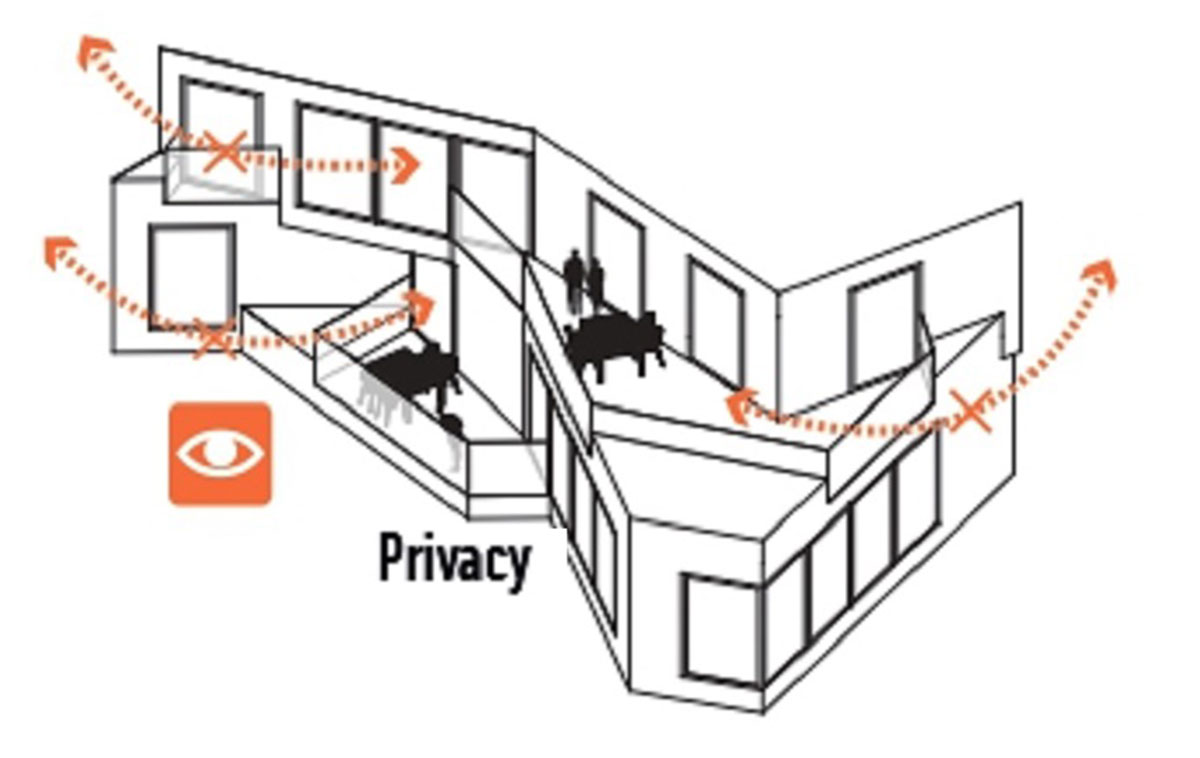
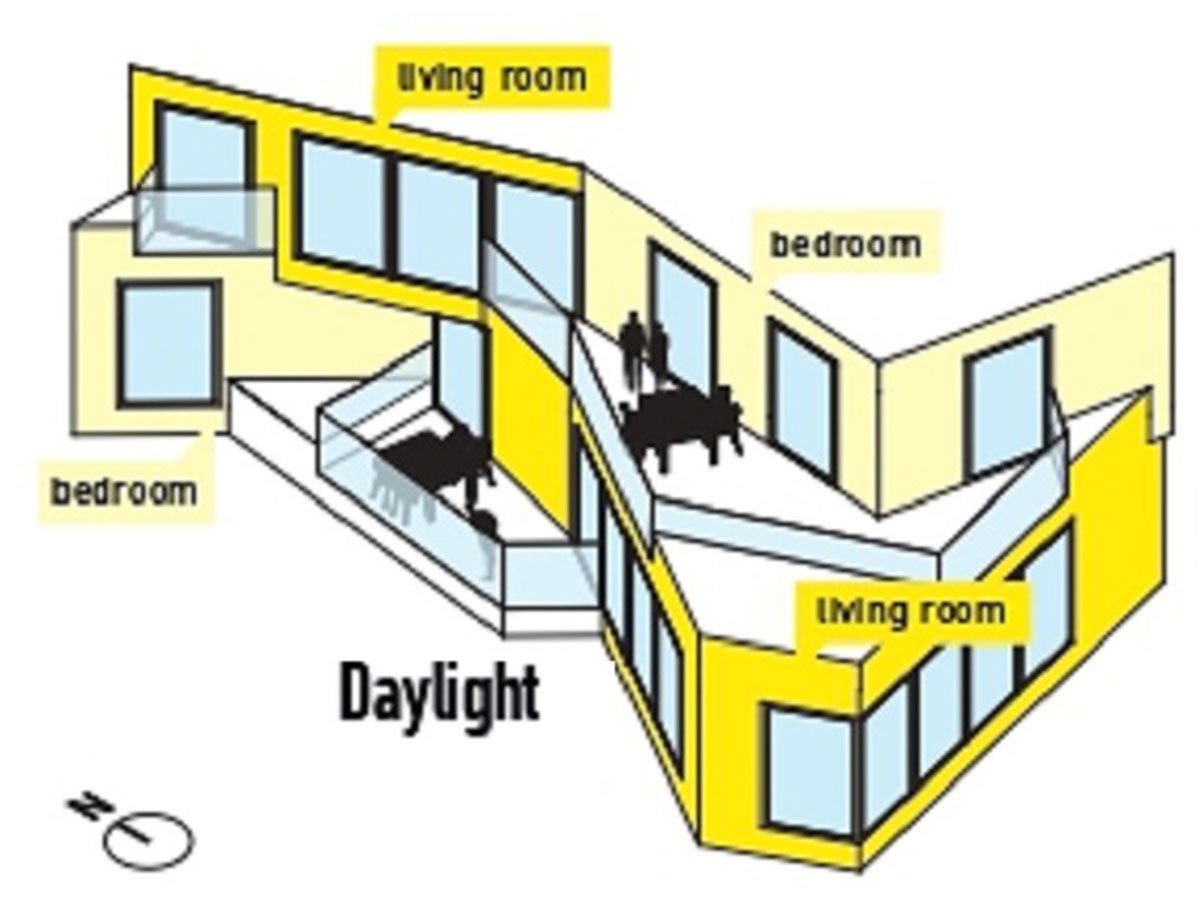
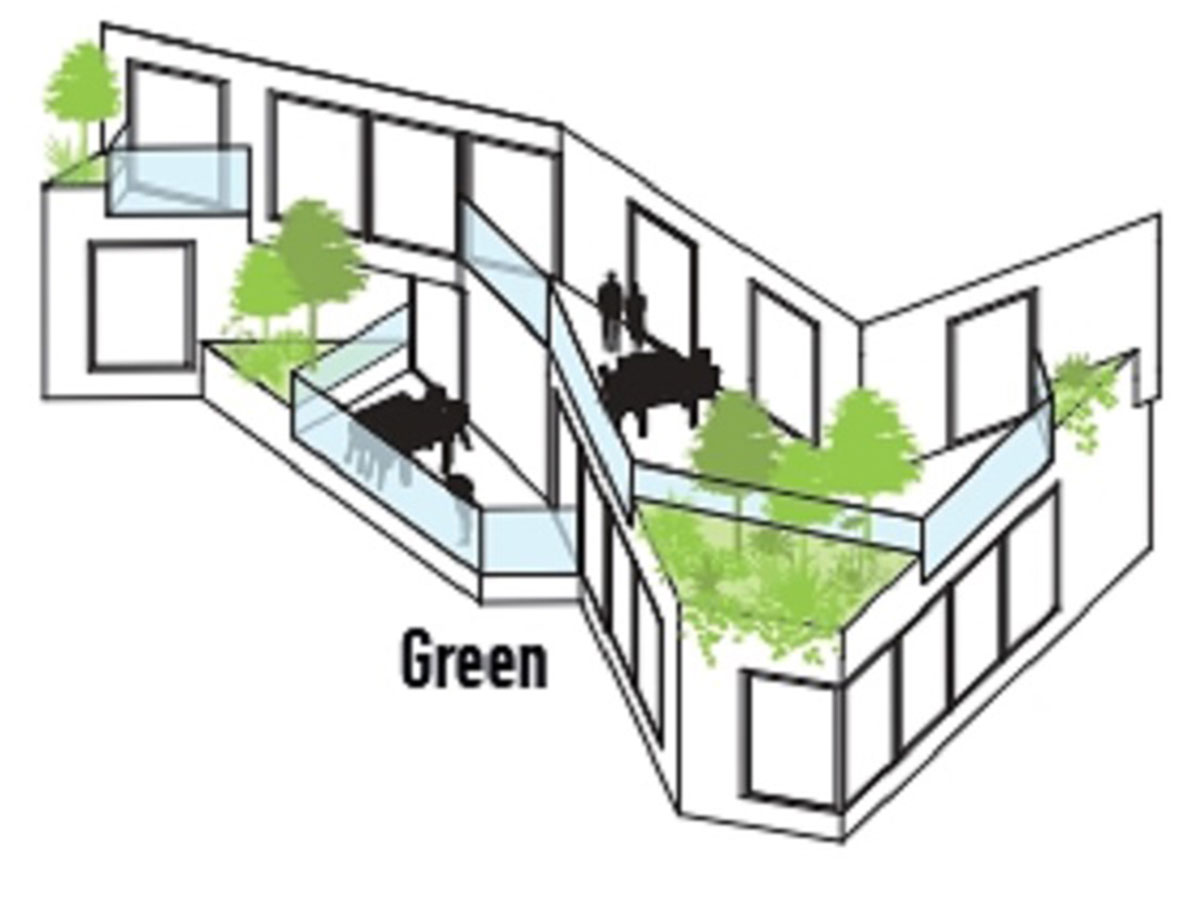
Valley’s location is defined by transition. It sits on the border between residential and commercial functions. It forms the connection between green sports fields and the dense urban setting of the business center and it initiates the change from the smaller scaled buildings of the inner city to the large volumes that define the South-axis. The concept of the building is rooted in this idea of transition.



By placing the residential volumes on top of the multifunctional plinth and pushing them to the very edge of the envelope, the resulting volume reads as one single entity. In mirroring the corporate surroundings through its reflective exterior façade, the design acknowledges its corporate heritage and visually connects to its immediate neighbors. In direct contrast to this, the inner façade is defined by a series of rugged, stone terraces with large planters, covering the building in vegetation and bringing a sense of human scale to the volume. Through this opposing treatment of the facades, the duality of the resulting volume, which is reminiscent of a carved-out block, is expressed: The corporate vs the residential. The XL vs. the human scale.


